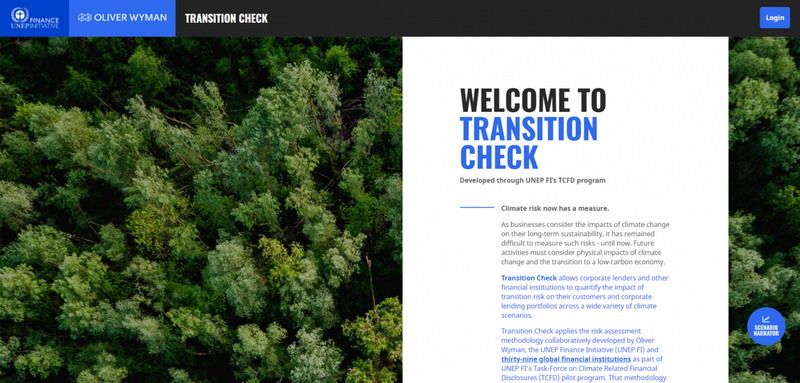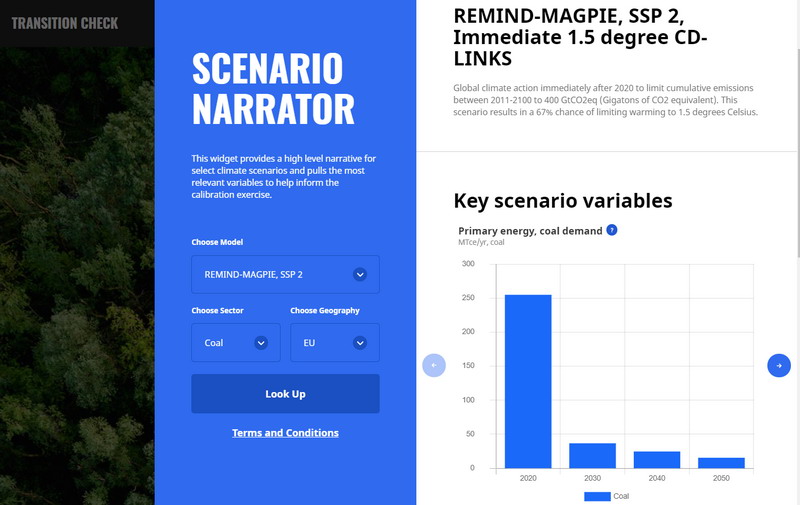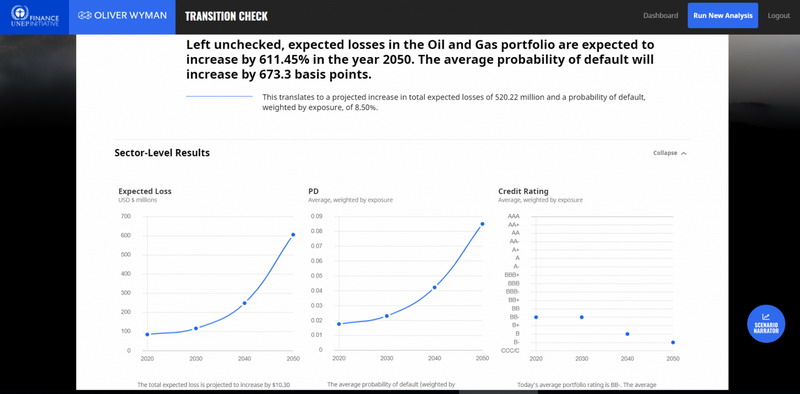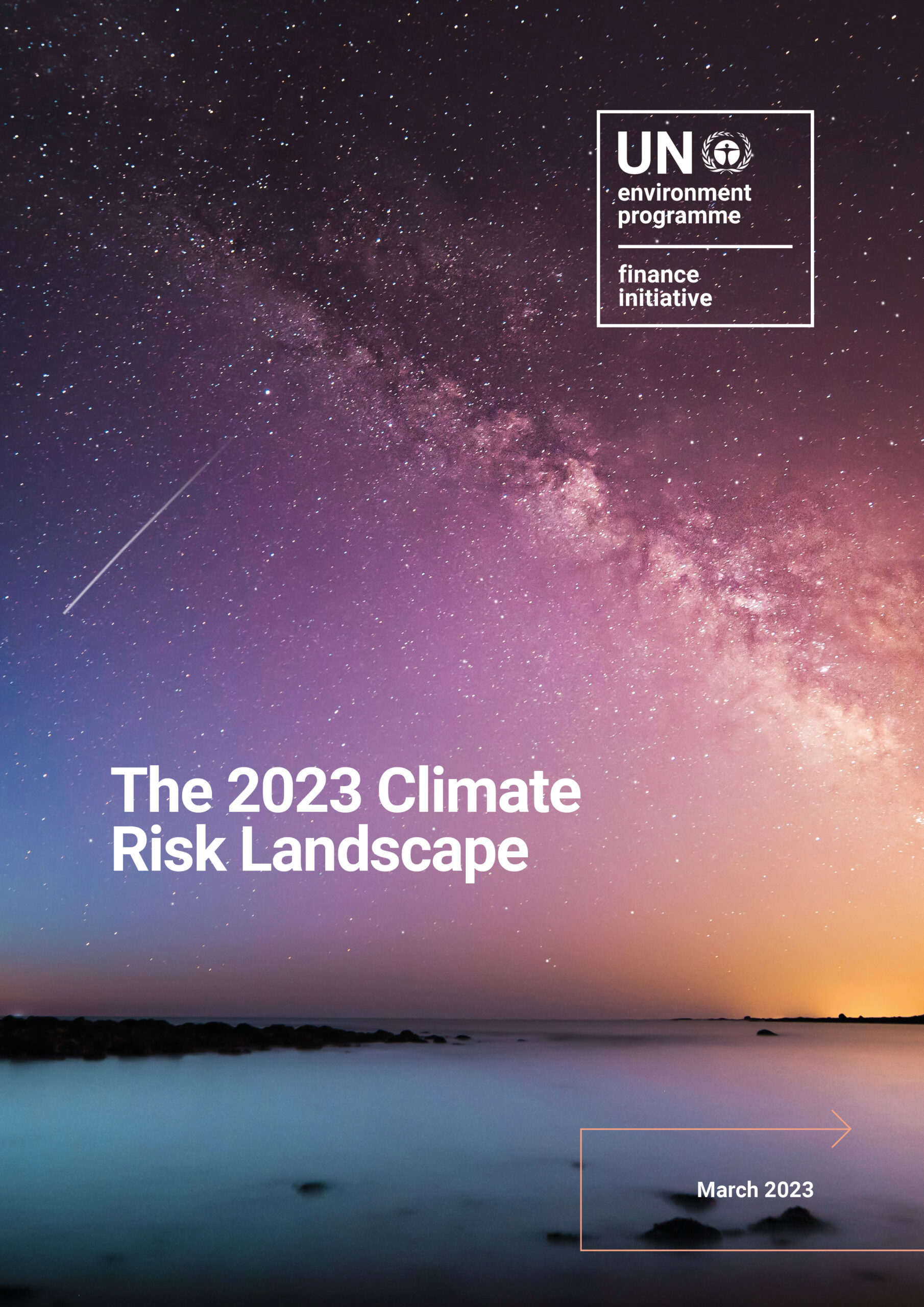UNEP FI and Oliver Wyman launch ‘Transition Check’, a web-tool that takes a scenario-based approach for assessing transition risk.
As businesses consider the impacts of climate change on their long-term sustainability, it has remained difficult to measure such risks – until now. Introducing Transition Check, a web-tool that takes a scenario-based approach for assessing transition risk and the potential impact of climate change on corporate lending portfolios within an overall framework consistent with the recommendations of the Financial Stability Board’s Task Force on Climate-related Financial Disclosures (TCFD).
Analysis of previously neglected impacts of physical risk (brought on by the increasing severity and frequency of climate events) and transition risk (arising from the adjustment to a low-carbon economy) is now critical for future planning.
Transition Check represents the culmination of two years of collaboration between UNEP FI, Oliver Wyman Consulting, and dozens of UNEP FI member banks within UNEP FI’s TCFD pilot projects. The approach behind Transition Check was developed and validated in the first TCFD pilot project and detailed in the Extending Our Horizons report. This methodology leverages climate scenarios from globally renowned researchers such as the Potsdam Institute (PIK) and the International Institute for Applied Systems Analysis (IIASA). Scenario variables are then transformed into financially relevant impacts for a broad range of economic sectors and geographies. These financial impacts can then be used to produce portfolio level expected losses (EL), probabilities of defaults (PD), and losses given default (LGD) under each scenario.

Transition Check provides financial institutions with a dynamic and user-friendly way to conduct transition risk assessments using this tested approach. Institutions can select from over a dozen climate scenarios developed by PIK and IIASA. These scenarios include various temperature targets (e.g. 1.5º C, 2º C) and different storylines (e.g. orderly vs. disorderly transitions). They also include many of the recently released reference scenarios from the Central Banks and Supervisors Network for Greening the Financial System (NGFS). The key scenario variables across sectors and geographies can be visualized and downloaded with Transition Check’s fully-public Scenario Narrator.

Transition Check produces a wide range of useful outputs for financial institutions conducting climate scenario analysis. Losses, PDs, and LGDs are produced for each sector, segment, ratings grade, and borrower for each scenario. These results are displayed in a clean graphical format that is also downloadable. The structured format of the outputs makes them easily interpretable and comparable across scenarios and institutions.

We hope Transition Risk will empower our global members to better understand climate scenarios and conduct climate scenario analyses. These analyses will allow them to better manage and disclose their climate risks within the framework of the TCFD. To facilitate this, Transition Check will be freely available to all UNEP FI members.
For a tutorial or to gain access to Transition Check, please contact David Carlin (David.Carlin@un.org). A video highlighting Transition Check’s functionality can be viewed here.


